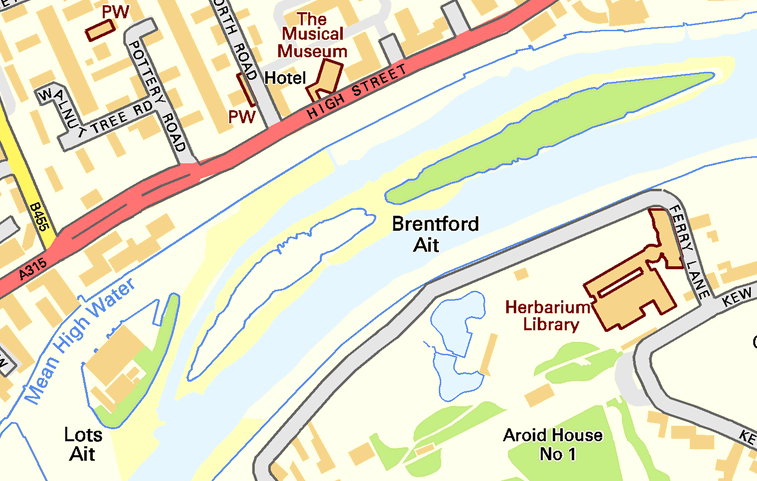The sentence elaborates on 'fog everywhere' with a broad gesture between two poles along an axis: up and down.
Each of those poles gets half the sentence: The fog is up the river, and the fog is down the river.
Contrasting the poles
It might not register with you on first reading, but Dickens makes a contrast between those two poles:
- Up the river it's green meadows and farmland
- Down the river it's polluted industrial docklands
The contrast helps define the scale of the city: so big that it's completely different from one end to the other.
When writing your variation, you might be able to use a similar contrast to create interest and scale.
"What's an ait?"
Good question! An ait (or eyot) is a slender island in a river or stream, created by sedimentary deposits.


